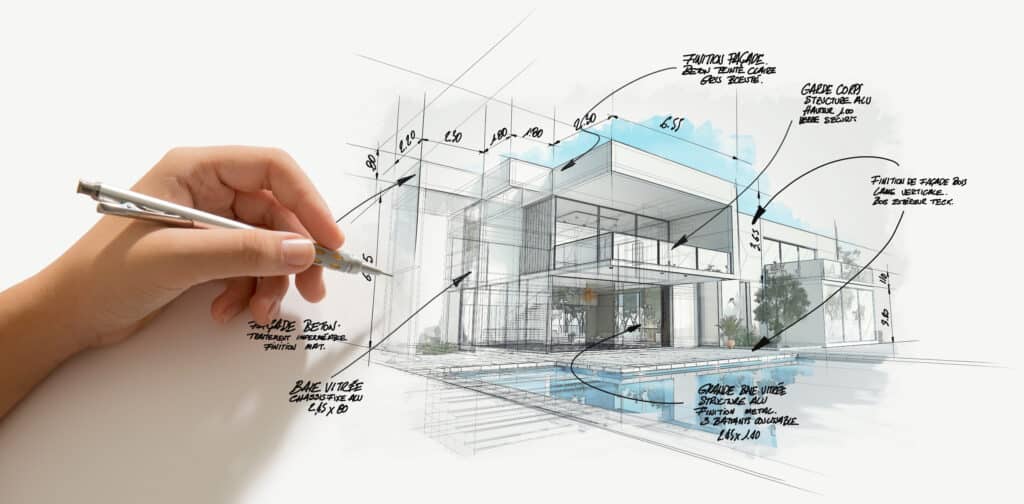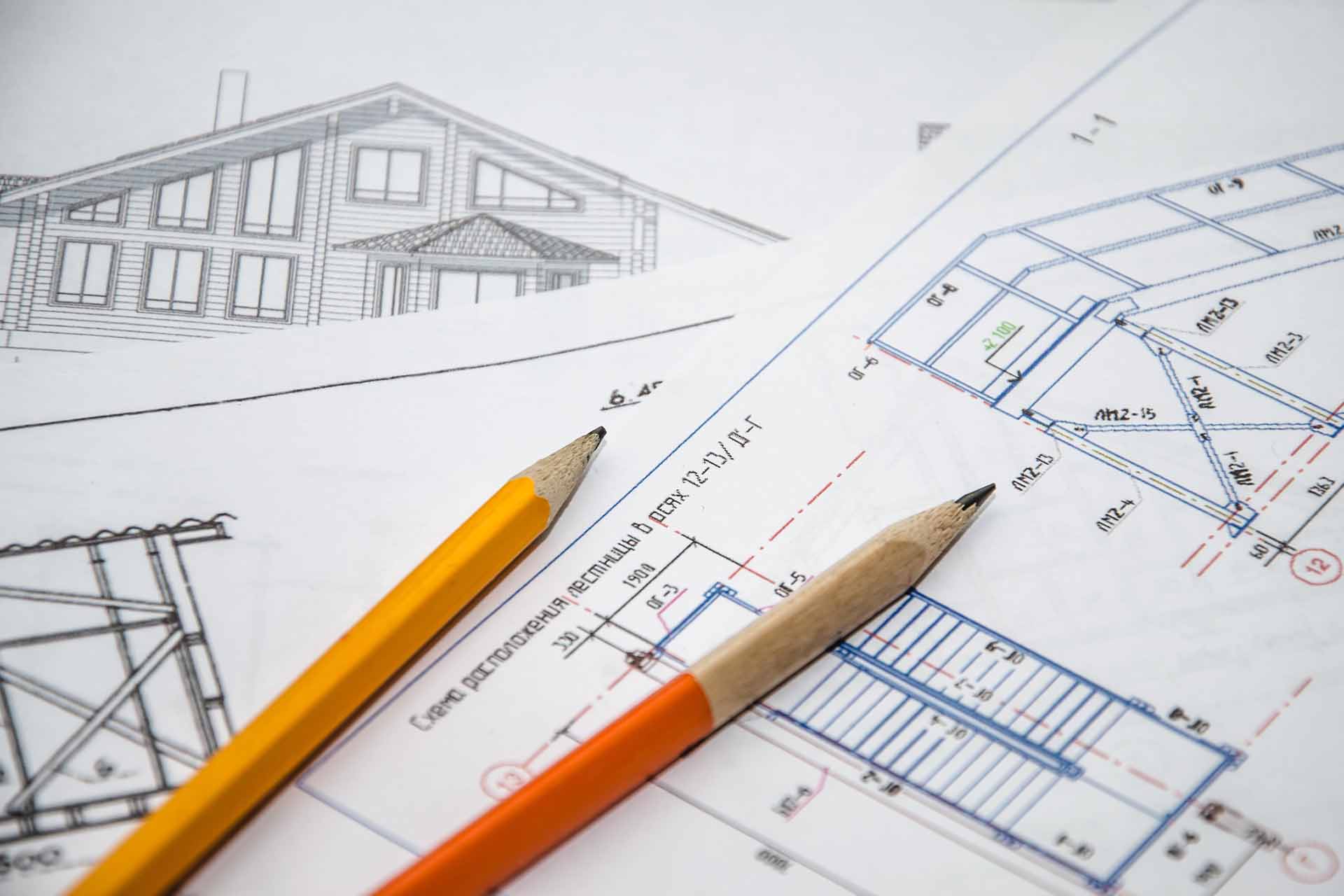Architect Salary Breakdown by Location and Experience
Architect Salary Breakdown by Location and Experience
Blog Article
Recognizing the Diverse Occupation Paths Available for Aspiring Architect
As a hopeful Architect, you have a world of career courses waiting on you. Each course uses one-of-a-kind challenges and chances to apply your imagination and technological expertise. Whether you're drawn to traditional architecture or the subtleties of lasting layout, there's a specific niche that straightens with your interests. Comprehending these diverse choices can form your professional journey, but which direction will you select to explore first?
Traditional Design: Creating Frameworks and buildings
Standard design focuses on designing structures and frameworks that blend performance with visual allure. As you discover this field, you'll appreciate the elaborate balance in between kind and function. You'll discover to draw inspiration from historical designs, integrating components like proportion, materials, and craftsmanship. Your designs can reflect social heritage, showcasing regional customs while fulfilling modern demands.
You'll establish skills in preparing, model-making, and site evaluation, enabling you to envision and connect your concepts properly. Engaging with clients, you'll require to comprehend their vision and convert it right into feasible layouts.
Additionally, constructing codes and sustainability techniques are essential in your work, ensuring your structures are eco friendly and safe. As you expand in your occupation, you'll locate possibilities in domestic, business, or perhaps reconstruction jobs, each offering distinct obstacles. Welcoming conventional style leads the method for a fulfilling profession that pays tribute to the past while forming the future.
Urban Planning: Shaping Communities and Public Spaces
As an aspiring Architect, you can play a vital role as an urban organizer, transforming exactly how areas work and engage. By employing community interaction strategies, you'll assure that homeowners have a voice fit their setting. And also, incorporating sustainable layout concepts will help produce spaces that not only fulfill today's needs but additionally safeguard the future.
Function of Urban Planners
While lots of may consider engineers as the sole enthusiasts behind buildings, city coordinators play a crucial function in forming the more comprehensive landscape of communities and public rooms. They analyze land use, zoning regulations, and area requires to develop sustainable environments that enhance quality of life. By collaborating with numerous stakeholders, you'll assist make parks, transport systems, and residential areas that promote social communication and availability. Urban organizers additionally concentrate on ecological factors to consider, guaranteeing that developments integrate eco-friendly areas and support biodiversity. Your competence in spatial design and area dynamics allows you to envision future development while protecting cultural heritage. In this crucial duty, you'll directly influence just how people experience their environments, making every job a chance for positive change.
Area Involvement Methods
Effective neighborhood interaction methods are important for urban organizers to assure that the voices of residents are heard and valued in the preparation process. To foster significant discussion, you should prioritize open discussion forums and workshops where area members can share their ideas and concerns. By actively including and paying attention responses, you'll develop rooms that show the community's requirements, eventually leading to even more lasting and effective urban settings.
Lasting Design Principles
When developing urban spaces, incorporating sustainable style concepts is essential for producing atmospheres that thrive both environmentally and socially. Consider incorporating green spaces, like parks and yards, to improve biodiversity and boost air quality.
Creating with water conservation in mind is likewise vital-- think regarding rainfall gardens and permeable surface areas to manage stormwater. Entailing area participants throughout the planning procedure warranties that the rooms you produce fulfill their requirements and motivate social interaction. By accepting these concepts, you'll add to lively, lasting city landscapes that profit every person.

Landscape Architecture: Producing Lasting Exterior Atmospheres
As you explore landscape design, you'll discover vital style principles that create practical and gorgeous exterior spaces. Lasting methods play an important duty in making certain these atmospheres grow while lessening environmental impact. And also, you'll find a range of profession possibilities that permit you to make an actual difference in exactly how individuals communicate with nature.
Design Concepts in Landscape
Understanding design principles in landscape architecture is crucial for producing sustainable outside settings that harmonize with nature. You'll need to ponder elements like proportion, balance, and scale to ensure your layouts feel cohesive and welcoming. Including native plants not just enhances biodiversity however additionally reduces water usage, making your landscape resistant. Consider the flow of area and exactly how individuals interact with it; pathways and seating areas ought to invite exploration and relaxation. Furthermore, take note of seasonal changes, developing with products that match the environments year-round (Architect). By focusing on sustainability and looks, you can develop outdoor spaces that enhance the neighborhood and promote wellness. Accepting these concepts will certainly establish a strong foundation for your job in landscape architecture.
Lasting Practices Introduction
Sustainable techniques in landscape style not only concentrate on visual appeals yet also prioritize ecological wellness and resource conservation. You can develop areas that promote dirt health, such as exercising and utilizing natural products permaculture concepts. Inevitably, these practices assure your styles benefit both people and the setting for years to come.
Occupation Opportunities Exploration
With a strong structure in lasting techniques, landscape design supplies a variety of career courses that allow you to make a purposeful influence on the setting. Urban organizers usually work together with landscape architects to create eco-friendly rooms in metropolitan settings, enhancing city livability. If you're passionate regarding education and learning, think about ending up being a landscape architecture educator, motivating future generations.
Lasting Style: Focusing on Eco-Friendly Practices
As view website you discover your profession in architecture, embracing environmentally friendly practices can establish you apart in a competitive area. Lasting style concentrates on creating structures that minimize environmental impact while boosting occupant well-being. By including eco-friendly materials, energy-efficient systems, and lasting building techniques, you'll add to a greener future.
Beginning by obtaining understanding of eco-friendly certifications like LEED or BREEAM, which can reinforce your qualifications. Consider just how natural light, air flow, and thermal effectiveness can maximize style. Collaborate with designers and ecological experts to introduce solutions that lower waste and conserve sources.
Do not neglect the value of community involvement-- appealing regional stakeholders can influence styles that balance with the setting. As customers significantly focus on sustainability, your know-how in eco-friendly practices will certainly not only draw in jobs however also satisfy your passion for liable architecture. Accept this critical aspect of the occupation, and enjoy your occupation grow.
Historic Preservation: Safeguarding and Bring Back Cultural Heritage
While you commence on your architectural trip, take into consideration the necessary duty of historical preservation in maintaining our social heritage. This area concentrates on the protection and reconstruction of substantial buildings, websites, and structures that tell the tales of our past. By participating in historic conservation, you'll help secure the architectural legacy that shapes community identity.
As a historical preservation Architect, you'll examine historical relevance and examine the problem of structures. You'll function carefully with historians and preservationists to ensure authentic reconstruction techniques are employed. This job path allows you to blend creativity with research study, allowing you to design options that respect original products and craftsmanship.
Your work not only adds to sustainability by reusing existing buildings yet also promotes a sense of pride within neighborhoods. Welcoming this path will aid you come to be a guardian of history, protecting the tales and aesthetics that enhance our lives.
Inside Style: Enhancing Indoor Spaces
Historical conservation and indoor architecture both share a commitment to improving the constructed setting, but they concentrate on different facets. While historical preservation stresses maintaining a structure's historical and cultural worth, indoor style nos in on maximizing interior spaces for functionality and visual appeals.
As a hopeful Architect, you'll discover that indoor style permits you to blend imagination with technological skills. You'll develop areas that not only look good but additionally advertise comfort and effectiveness. This field entails comprehending exactly how light, shade, and products engage within an area, impacting mood and functionality.
You'll function on numerous tasks, from household homes to business workplaces, ensuring that each atmosphere meets the needs of its occupants. By focusing on customer experience, you can transform interiors right into motivating and practical rooms, making a substantial effect on exactly how people interact with their environments. Accept the opportunity to boost interior atmospheres and form the means people work and live.
Industrial Layout: Combining Performance With Appearances
Commercial style plays a necessary function in creating items that flawlessly mix aesthetic appeals with capability, ensuring that what you make use of everyday is not only visually attractive recommended you read yet also useful. As a hopeful Architect, you might immerse on your own in this field, concentrating on developing whatever from furniture to customer electronic devices. Your work involves understanding customer needs, products, and producing procedures, enabling you to create ingenious solutions that boost day-to-day experiences.
In industrial design, you'll usually work together with designers, producers, and marketing experts, making certain that your designs are not only beautiful however additionally feasible. You'll discover to balance form and function, prioritizing functionality without giving up design. By honing your abilities in mapping out, 3D modeling, and prototyping, you'll be fully equipped to bring your concepts to life. This occupation course supplies a vibrant environment where imagination satisfies functionality, making it a fulfilling choice for designers curious about forming the items of tomorrow.
Regularly Asked Inquiries
What Educational Accreditations Do I Need to Come To Be a Designer?
To become a designer, you'll need an expert level in design, usually a Bachelor's or Master's. Additionally, you'll need to finish a teaching fellowship and pass the Architect Enrollment Evaluation to exercise lawfully.
Are There Qualification Requirements for Various Architectural Job Paths?
Yes, there're accreditation needs for numerous architectural courses. Architect. You'll need to pass tests, complete teaching fellowships, and in some cases pursue specialized training, relying on your selected emphasis, like landscape architecture, urban layout, or historic preservation
What Software Skills Are Important for Engineers Today?

Just How Can I Gain Practical Experience While Examining Design?
You can acquire useful experience by interning at architectural companies, getting involved in design competitors, volunteering for area projects, or working together with schoolmates on real-world assignments. These opportunities enhance your skills and build valuable connections in the industry.
What Work Opportunities Exist Outside Traditional Design Firms?
You can discover numerous task possibilities outside typical architecture companies, like city planning, interior decoration, landscape architecture, building and construction monitoring, realty advancement, or perhaps roles in sustainability consulting. Each offers special obstacles and benefits.
Whether you're attracted to typical architecture or the nuances of sustainable style, there's a niche that lines up with your interests.When developing metropolitan areas, including lasting layout concepts is vital for creating atmospheres that prosper both environmentally and socially.As you discover landscape style, you'll find necessary layout concepts that develop gorgeous and practical outside areas.Comprehending style principles in landscape design is vital for developing lasting exterior settings that integrate with nature.In commercial style, you'll commonly work together with designers, marketers, and manufacturers, guaranteeing that your designs are not only lovely however likewise feasible.
Report this page